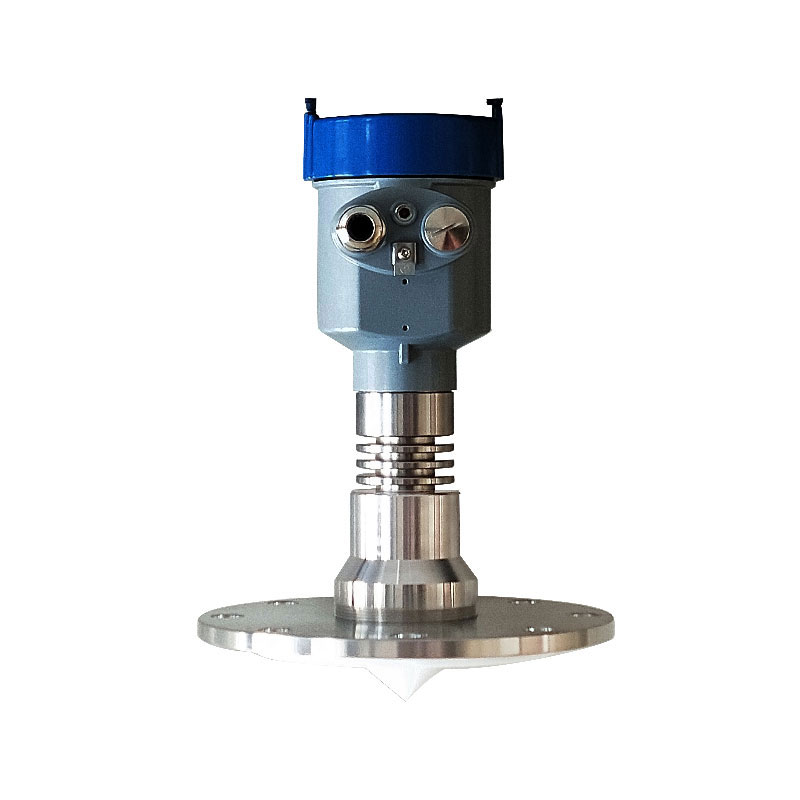Shandong Fengtu IOT Technology Co., Ltd
Sales Manager:Ms. Emily Wang
Cel,Whatsapp,Wechat:+86 15898932201
Email:info@fengtutec.com
Add:No. 155 Optoelectronic Industry Accelerator, Gaoxin District, Weifang, Shandong, China

Sales Manager:Ms. Emily Wang
Cel,Whatsapp,Wechat:+86 15898932201
Email:info@fengtutec.com
Add:No. 155 Optoelectronic Industry Accelerator, Gaoxin District, Weifang, Shandong, China

Model:YW-26B
Brand:fengtu
1.Product Principle of Corrosive Liquid Level Sensor
The radar level antenna emits a narrow microwave pulse, which is transmitted downward through the antenna. After the microwave contacts the surface of the measured medium, it is reflected back and received by the antenna system again, and the signal is transmitted to the electronic circuit part and automatically converted into a level signal (because the microwave propagation speed is extremely fast, the time taken for the electromagnetic wave to reach the target and return to the receiver through reflection is almost instantaneous).
2. Corrosive liquid level sensor technical parameters
Product features: PTFE cone antenna
Typical applications: liquids, powders, high-sanitation situations, situations prone to crystallization, condensation, and adhesion of oil smoke and dust, etc.
Measuring range: 30 meters
Antenna material: PTFE (optional)
Accuracy: ±5mm
Process temperature: -40~260℃
Process pressure: -0.1~4.0Mpa
Power supply: 24vDC (two-wire, four-wire)
Signal output: 4~20mA/Har (two-wire/four-wire)
RS485/Modbus
Process connection: flange (≥DN50 optional)
Protection level: IP67
Frequency range: 26GHz
Protection level: IP67
Explosion-proof grade: ExiaⅡC T6 Ga/Exd ia IIC T6 Gb
On-site display: LED (standard)
Cable entry: M20*1.5, ½NPT (optional)
Shell material: cast aluminum, 304 stainless steel (optional)
3. Features of Corrosive liquid level sensor
The antenna is small in size and easy to install; it is a non-contact radar, without wear and pollution.
Almost unaffected by corrosion and foam; almost unaffected by water vapor, temperature and pressure changes in the atmosphere.
Severe dust environment has little effect on the operation of high-frequency level meters.
The shorter the wavelength, the better the reflection from inclined solid surfaces.
The small beam angle and concentrated energy enhance the echo capability while helping to avoid interference.
The measurement blind area is smaller, and good results can be achieved even for small tank measurements.
High signal-to-noise ratio for better performance even under fluctuating conditions.
High frequency, the best choice for measuring solids and low dielectric constant media.
In tunnel operation and management, safety is of paramount importance. Visibility and the brightness conditions inside and outside the tunnel directly affect drivers' visual experience and traffic safety. Therefore, a series of professional detection instruments are applied in tunnels. Below, we...
Agricultural production is closely linked to the natural environment, which makes it relatively vulnerable to meteorological disasters. Firstly, the growth cycle of crops is long. From sowing to harvesting, they are exposed to the natural environment for a long time, and any encounter with meteorolo...
Agricultural Weather Stations are small automatic weather stations specifically designed for agricultural ecological environments, aimed at monitoring the energy and material exchange between agricultural production environments and agricultural organisms.They can monitor various meteorological elem...
On the rooftops of distributed photovoltaic power stations and between small photovoltaic arrays, a compact and sophisticated monitoring device is often seen – this is the PV Weather Station. With its small size, flexible deployment, and precise monitoring capabilities, it provides reliable data fo...